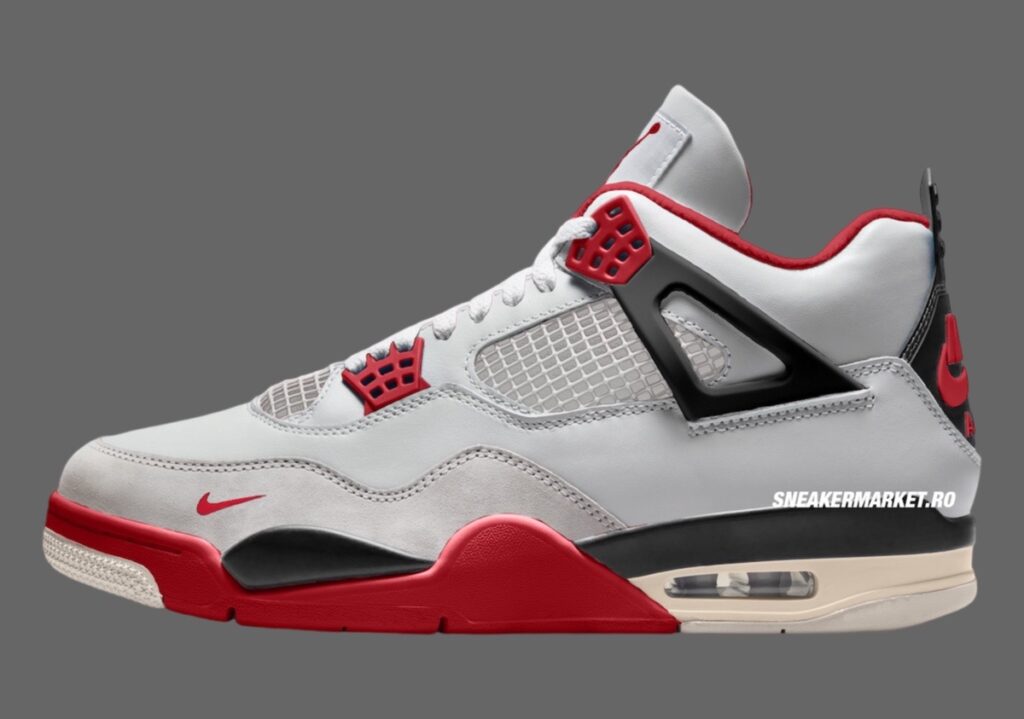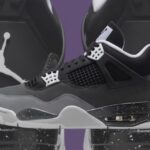“`html
Air Jordan 4 Fire Red: Price Check & Deals Guide
Introduction
The Air Jordan 4 ‘Fire Red’ is one of the original four colorways released in 1989, cementing its place as a true icon in sneaker history. Given its popularity and the fluctuations in the sneaker market, finding the best price for such a sought-after sneaker can be challenging, making price comparison essential for any prospective buyer.
Retailer Comparison: The Original Price Point
When the Air Jordan 4 “Fire Red” last saw a major retro release (notably the 2020 version with “Nike Air” on the heel), its official retail price was typically around $200 USD for adult sizes. These would have been available through official Nike channels like the SNKRS app, and select retailers such as Foot Locker, Finish Line, and Champs Sports.
However, due to extremely high demand and limited stock, these sneakers sell out almost instantaneously upon release. Therefore, finding them at the original retail price long after the drop date is virtually impossible unless Nike announces a restock, which is rare for such iconic models.
Resale Market Analysis: Where the Fire Burns Hottest
The vast majority of Air Jordan 4 “Fire Red” purchases now happen on the resale market. Prices here vary significantly based on several factors:
- Platform:
- StockX: Prices for the 2020 retro (with “Nike Air”) typically range from $350 to $550+ depending on size and current market demand. Deadstock (brand new, unworn) pairs command higher prices. Older retros (like the 2012 version with the Jumpman on the heel) might be slightly less but can still be pricey.
- GOAT: Similar to StockX, prices for new pairs of the 2020 Fire Red 4s are generally in the $380 to $600+ range. GOAT also offers used options, which can be more affordable, potentially starting from $250+ depending on condition.
- eBay: A wider range of prices can be found here, from used pairs potentially under $300 to new pairs matching or exceeding StockX/GOAT prices. Authenticity can be a bigger concern, though eBay has an “Authenticity Guarantee” program for many sneaker sales.
- Condition: Brand new (Deadstock with Tags – DSWT) pairs are the most expensive. Used pairs (VNDS – Very Near Deadstock, or more worn) will be cheaper, but condition greatly impacts value.
- Size: More common sizes often have more availability and slightly more competitive pricing, while very small or very large sizes can sometimes be more expensive due to rarity.
- Specific Release: The 2020 “Nike Air” retro is highly sought after. Older retros might have different values. The OG 1989 pair, if found in good condition, would be extremely expensive.
- Seller Reputation & Authenticity: Buying from reputable sellers or through platforms with authentication services is crucial, and this peace of mind can be factored into the price.
Tips for Finding Deals (and Avoiding Heartbreak)
- Be Patient: Prices can fluctuate. Sometimes, waiting after an initial hype wave can lead to slightly better deals, though this isn’t guaranteed for classics.
- Consider Used: If you plan on wearing them, a lightly used pair in excellent condition can save you a significant amount of money. Always check photos carefully and buy from reputable sources.
- Set Price Alerts: Some platforms allow you to set alerts for when a shoe in your size hits a certain price point.
- Follow Sneaker Accounts: Stay updated on potential restocks (rare, but possible) or special releases by following sneaker news outlets and influencers.
- Beware of “Too Good To Be True”: If a price seems drastically lower than the market average, especially for a new pair, it’s a major red flag for fakes.
- Check Seller Reviews: On platforms like eBay, always check a seller’s feedback and history.
- Factor in Fees: Remember to include shipping costs, sales tax, and platform fees (like StockX’s buyer processing fee) when comparing final prices.
Authenticity Guide: Spotting Fakes
The Air Jordan 4 Fire Red is a popular target for counterfeiters. Here are some general tips to help you spot fakes (specifically for the 2020 retro):
- “Nike Air” on Heel: This is crucial for the 2020 retro. The font, placement, and quality should be crisp. Older retros (e.g., 2012) will have a Jumpman logo here.
- Overall Shape: Authentic AJ4s have a distinct silhouette. Fakes often get the toe box shape, heel bump, or overall stance wrong. Compare with photos of verified pairs.
- Stitching: Look for clean, consistent, and high-quality stitching. Messy, uneven, or frayed stitching is a bad sign.
- Tongue Tag: The “Flight” script and Jumpman logo on the tongue tag should be well-defined. The stitching around the tag should be neat. Check the details on the back of the tongue tag too.
- Netting: The plastic netting on the sides and lower tongue should be properly aligned and of good quality. On fakes, it can be flimsy or poorly cut.
- Materials: The leather quality should feel premium. Fakes often use cheaper, stiffer materials.
- Box and Label: The box should be sturdy, and the label details (style code, size, barcode) should match the shoes and be correctly formatted. Compare the label font and layout with known authentic examples.
- Smell: Authentic Nikes have a particular factory smell. A strong, overpowering chemical smell can be an indicator of a fake.
- Insole: Check the logo printing on the insole and the stitching underneath if you can remove it.
When in doubt, use a professional authentication service or buy from platforms that offer an authenticity guarantee.
Conclusion: Are They Worth the Heat?
The Air Jordan 4 Fire Red shoes are super cool and a big classic. They first came out many years ago. It’s really hard to buy them brand new from normal shoe stores for the first, low price. Most people now buy them from other sellers online. This usually costs a lot more money. Before you buy, it’s very important to make sure the shoes are real and not fakes. If you really, really like these sneakers and you can find a good pair that’s real, they can be an awesome shoe to own and wear!
“`



